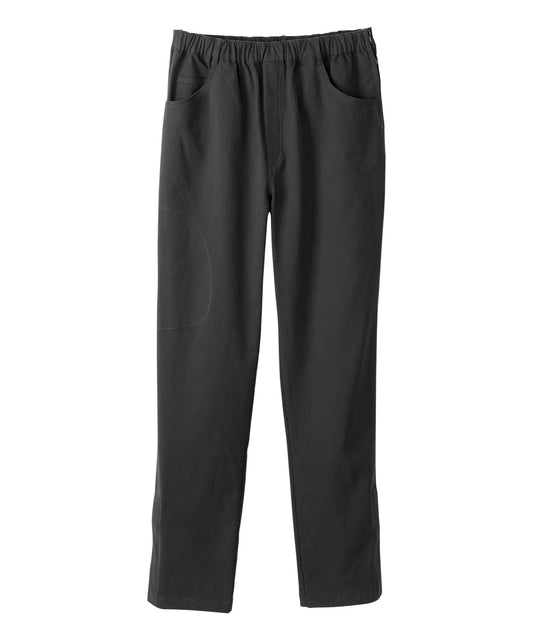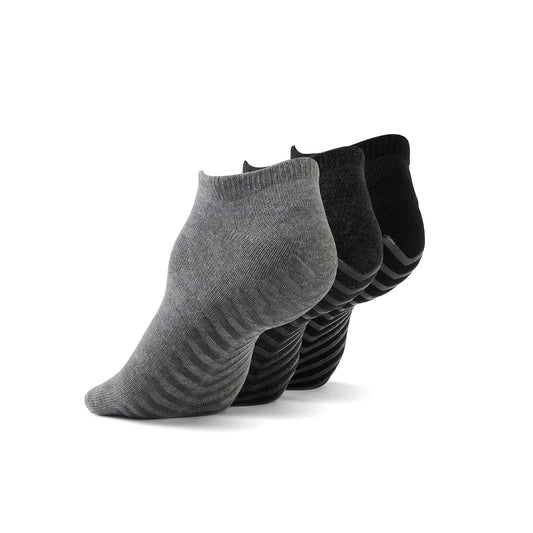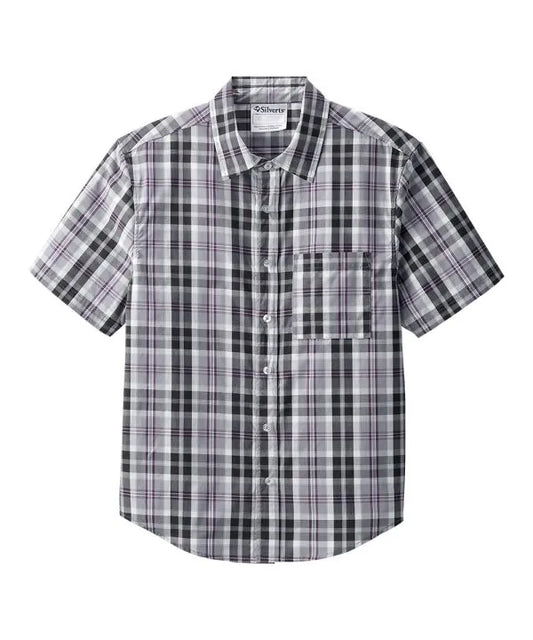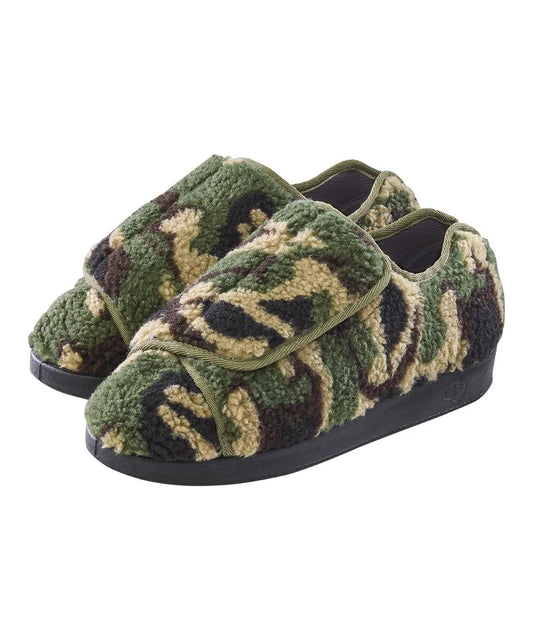How to Stay Connected with Loved Ones in Long-Term Care: Communication Tips for Families
Author: Harshil Shah
When my grandmother moved into long-term care, I didn’t expect the silence.
Not just the absence of her voice in the hallway or her usual hum while watering plants. I mean the silence when you’re no longer part of someone’s daily life. The kind where you wonder, Are they okay? Do they miss me? Do they feel forgotten? And honestly, do they feel like themselves anymore?
These questions don’t have easy answers, but there are things you can do. Staying connected with someone in long-term care takes more than regular phone calls. It requires consistency, empathy, and, sometimes, a little creativity. Whether it's through tech, thoughtful gifts, or simple routines, meaningful connection is still very possible—and deeply powerful.
One unexpected way to deepen that bond? Adaptive clothing.
It may sound small, but what someone wears impacts how they feel. And how they feel shapes how they connect with the world around them, including the people they love.
1. The Best Ways to Stay in Touch with a Resident in Long-Term Care: Keeping Them Comfortable with Adaptive Clothing
Let’s start with the basics. Staying in touch means more than just saying “Hi” now and then. It means finding ways to regularly show up—even from a distance.
Here are a few ideas:
-
Send a care package with their favourite snacks or hand lotion.
-
Mail printed photos with handwritten notes on the back.
-
Record a weekly voice message telling them what you’ve been up to.
-
Set a weekly “chat hour” where they can expect a call or video check-in.
-
Create a small family bulletin that you mail monthly with updates, photos, even crossword puzzles or jokes.
But while you're mailing cozy socks or thoughtful cards, why not slip in something they can wear independently?
For instance, the Women’s Magnetic Zipper Active Jacket is perfect for everyday wear. It’s stylish and sporty, but the real magic is in the magnetic zipper. It allows someone with arthritis or limited mobility to zip themselves up without struggle. When dressing becomes easier, people feel more independent, and that independence boosts confidence in every interaction.

Imagine your mom, grandma, or aunt slipping it on before a walk in the garden or a video call. No more tugging at stiff buttons or asking a nurse for help. Just zip and go.
That’s more than a jacket—it’s a reminder: “You can still do this on your own.”
2. Using Technology to Bridge the Distance: Video Calls and Adaptive Clothing for Comfort and Style
Let’s talk tech. FaceTime, Zoom, and WhatsApp have become lifelines for families with loved ones in care. You get to see their smile, read their expressions, and create rituals—like “Saturday breakfast calls” or “Tuesday tea chats.”
But here’s something we don’t talk about enough: our loved ones want to look good, too.
My grandfather, for example, would always comb his hair and straighten his shirt before a call. He wanted to be seen the way he remembered himself: sharp, put-together, and proud. It wasn’t vanity. It was about dignity.
Enter the Women’s Reversible Front Vest with Magnetic Closure. It’s elegant but casual, cozy but structured. And with its reversible design, your loved one can switch up their look for every call, without help.

Even better, the magnetic front closure makes it effortless to put on. That means your mom or grandma can feel confident, not flustered, heading into a video chat. And that confidence shows. These moments, small as they seem, can make a huge emotional impact.
Pro tip: Try scheduling “theme days” for your calls. Wear red together on Valentine’s, or floral patterns in spring. Shared silliness makes for sweet memories. You can even surprise them with a themed prop or a small digital party.
3. Understanding the Communication Challenges in Nursing Homes—and How Adaptive Clothing Speaks Volumes
Here’s something you don’t hear in most guides: sometimes, your loved one won’t say when something’s wrong.
They don’t want to be a burden. Or they’ve simply grown used to discomfort. In care homes where staff are busy and privacy is rare, some residents learn to adapt by staying quiet. That silence can mask depression, frustration, or simply the loss of autonomy.
One hidden clue? Clothing.
If your loved one starts wearing the same pyjamas all day or avoids changing into fresh clothes, it might not be laziness—it might be that dressing has become a frustrating, even painful, task.
I remember calling my great-aunt and asking her how her day was. She always said, “I’m fine.” But during one visit, I noticed she hadn’t changed out of her robe in days. It wasn’t because she was cold or tired. It was because the buttons on her cardigans hurt her fingers. She simply didn’t want to ask for help again. I felt a pang of guilt realizing I hadn’t noticed sooner. It made me think about how many quiet struggles like that get missed.
This is where adaptive clothing becomes more than a convenience—it becomes a bridge to communication.
The Men’s Sherpa Lined Jacket with Magnetic Buttons is not only warm and soft—it looks like something you’d pick out from any upscale winter collection. But unlike typical jackets, it fastens with hidden magnets that snap securely and effortlessly.

When your dad or grandfather wears something like this, he’s more likely to feel presentable, warm, and confident—even if he doesn’t say it aloud. That silent expression of dignity? It’s priceless.
4. Scheduling Regular Visits and Virtual Check-ins: How Adaptive Clothing Makes Moments Smoother
If you’re within driving distance, visiting regularly can be a huge morale boost for your loved one. But life gets busy, and in-person visits can feel emotionally heavy, especially if your loved one’s condition is changing.
Here’s what helps: create a ritual.
-
Always bring their favourite coffee or treat.
-
Take a short walk around the grounds or garden.
-
Bring a new book to read together or an old movie to rewatch.
-
Gift them an item of clothing every few visits—something comfy and easy.
-
Play music from “their era” and watch how their eyes light up.
Clothing might seem trivial, but it can make visits smoother and more joyful. Why? Because when you’re helping someone get dressed—whether it’s for a family dinner, a hallway stroll, or even a wheelchair outing—you want that experience to feel empowering, not awkward.
Adaptive clothing transforms that process. No tugging. No twisting. Just a simple, smooth motion.
And if it’s a virtual visit? Consider setting up their space to feel special. Help the staff dress themselves in something fresh and bright. That little touch can boost self-esteem in a big way.
5. How to Maintain Emotional Connection and Build Confidence Through Clothing
At the heart of all this is one truth: connection is emotional.
Yes, you’re calling. Yes, you’re sending letters. But your loved one is also watching how you show up, what you notice, what you remember, and what you prioritize for them.
Sending adaptive clothing says, “I see you. I see what you’re dealing with. And I care enough to make it easier.”
When someone can get dressed without help, they start their day with a win. When they wear something they feel confident in, they’re more likely to engage—whether it’s joining a group activity or picking up a video call.
It’s not about the clothes. It’s about what the clothes allow them to do. To be seen. To feel human. To feel like themselves again.
Final Thoughts: Connection Starts with Care, Comfort, and Consistency
You don’t need a perfect plan or fancy schedule to stay connected. You just need to show up—again and again—in small but meaningful ways.
-
Send that card.
-
Call, even when you’re tired.
-
Ask questions. Listen closely.
-
Help them feel like themselves, especially through what they wear.
-
Be consistent. Even imperfect effort builds trust over time.
The truth is, staying emotionally close in long-term care takes effort. But it’s worth every ounce. And with the help of thoughtful tools—like adaptive clothing—you can make each connection smoother, more respectful, and more joyful.
So the next time you’re wondering what to send your mom, grandpa, or spouse in care, skip the flowers. Try something they’ll wear with pride. Something that says, “You matter. You’re still you. And I’m always with you.”
FAQs
Q: What is adaptive clothing, and who is it for?
Adaptive clothing is designed for people who have trouble with traditional clothing closures like buttons or zippers. It’s ideal for seniors, people with disabilities, or those recovering from surgery or injury.
Q: Are magnetic closures safe in the laundry?
Yes. All June Adaptive magnetic closures are built to withstand machine washing and everyday wear. Just be sure to follow the care instructions on the tag.
Q: Can I return or exchange clothing if it doesn’t fit my loved one?
Absolutely. June Adaptive offers hassle-free returns and exchanges, so you can shop with confidence.
Q: Is adaptive clothing stylish, or does it look medical?
Stylish! One of the best things about June Adaptive is that their designs look like regular clothing—just smarter and easier to wear.















